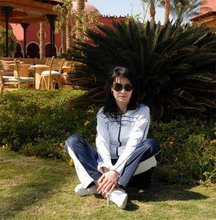Most of us can recall people who would refuse to eat grapes until a priest blessed the fruit.
There is a day in the year when people buy the grapes before going to the church because on this special day grapes enter the church as “forbidden fruit” and leave it blessed. This festival is a mixture of celestial and terrestrial, solemnity and familiarity, tradition and modernity.
In  Church Calendar and the most ancient- dedicated to St. Mary. Each year on the Sunday closest to the date of August 15, the Armenian Church celebrates the Feast of the Assumption of St. Mary, the Holy Mother of God.In August, since in pagan times, Armenians have been celebrating Navasard with grandeur (New Year holiday), nowadays the feast of Assumption of Holy Virgin celebrated in the same period has particularly inherited some individual features. In August grapes ripen and the festivals of Navasard have been continued with the blessing of grapes. The first blessed harvest was being sacrificed to Goddess Anahit- patroness of fecundity and maternity.
Church Calendar and the most ancient- dedicated to St. Mary. Each year on the Sunday closest to the date of August 15, the Armenian Church celebrates the Feast of the Assumption of St. Mary, the Holy Mother of God.In August, since in pagan times, Armenians have been celebrating Navasard with grandeur (New Year holiday), nowadays the feast of Assumption of Holy Virgin celebrated in the same period has particularly inherited some individual features. In August grapes ripen and the festivals of Navasard have been continued with the blessing of grapes. The first blessed harvest was being sacrificed to Goddess Anahit- patroness of fecundity and maternity.
The night before the ceremony pious people abided by their faith come to the church to sing religious songs and sleep inside the sacred walls. In the early morning with the sunrise they were getting ready for the celebration- animal sacrifices, sweets and infinite quantity of fruits accompanied by songs, dances and funny games.
During the grape blessing God is asked for benediction over the grape pits and people enjoy the fruits of it to be mentally and physically healthy and worthy of atonement.
God is asked to bless people who bring the grape as well.
On the Feast of the Assumption of St. Mary, the Ceremony of the Blessing of the Grapes is conducted, and the harvest for the entire year is blessed on that day.
Grapes do have a certain Christian symbolic significance, but for our ancestors it was a symbol of labor and recreation. Through the blessing, grape got divine significance. Our clergymen had chosen grape for benediction since Christ blessed the wine made from grapes and gave it to his disciples as a symbol of his vital blood. Thus work, pleasure and worship were all brought together in this ceremony. The same blessed grape would become blessed wine, and from that very grape people preserved a bit for the next year grape blessing ceremony as a sign of richness and abundance.
The details concerning Holy Mary’s life as well as the story of Assumption have been preserved and passed to us through the Holy and Sacred Tradition of the Apostolic Church.
Following the crucifixion of Jesus Christ, the Holy Virgin remains in Jerusalem, and lives under the care of St. John the Evangelist. For nearly 12 years, St. Mary lives by praying, fasting, and often visiting the empty tomb of her beloved Son. During one such visit to the tomb, the Archangel Gabriel appears and gives her the news of her imminent assumption to heaven. St. Mary relays the news to her relatives and all Christians, asking them to bury her in the valley of Gethsemane. St. Mary also asks the Apostle John to celebrate a Divine Liturgy, so she may receive Holy Communion one final time. After receiving Holy Communion, St. Mary returns to her room. As the Apostles prepare to mourn her death, St. John asks the Mother of God to leave an image of her face on a board of wood. St. Mary takes the board, crosses herself and brings it close to her face. Moistening the board with her tears, she asks God that by means of the board, people would be cured from disease. As the Apostles surround St. Mary, an indescribable light appears. The Son of God and the angels of heaven appear in the room. Seeing Christ, St. Mary dies.
St. Bartholomew the Apostle was absent and did not participate in the burial service of St. Mary. Upon his return to Jerusalem, he wishes to see St. Mary for the last time. Per his request, the Apostles open the tomb, yet they do not find the remains of St. Mary. According to His promise, Jesus Christ had delivered His mother to His heavenly kingdom. The Apostles give the board of St. Mary to St. Bartholomew for consolation.
According to Moses of Khoren, St. Bartholomew brings the board to Armenia. It is kept in the Province of Andzav, in a location called Darbnots. Years later, a church is built there in honor of St. Mary, and a convent is opened.
The symbol of this festivity is the idea of maternity full of faith, love and hope.
On coming Monday after the blessing of grapes we commemorate all dead.
After the ceremony you could experience an unforgettable instants of your lifetime filling up the baskets with grapes and drive to a cellar, where you could mix the blessed grapes with those in barrel, see and take part in wine making process pressing the grapes in the old fashioned way, bare feet.






